I’m an avid RPG gamer, and judging from the countless posts I’ve made mentioning this, I can assure you that. Lately, there’s only so much RPG games that you can play AND actually enjoy. The numbers are lower when it gets to traditional good ol’ RPG game. Things were a bit boring since I finished Dragon Quest IX, but then this game came out.
Golden Sun: Dark Dawn is the long awaited third instalment of the Golden Sun series. Obviously if you don’t play any handheld or portable games, you won’t know the series. But if you do, this series is the Final Fantasy for the handheld, minus all the complicated battle mechanics and technological weirdness.
The previous two games, Golden Sun and Golden Sun: The Lost Age was made for GameBoy Advance, and it was deemed to be the best RPG for handheld at the time, and refreshing as well. So after many speculations and couple of years, the sequel finally came out. Since I played the two original games, I decided to buy the sequel and see how the sequel live up to its series’ reputation. Bear with me as we stroll along a lengthy review.
Storyline
The game takes place in the concept of a flat world in which you can actually see the edge of the world falling off like waterfall. The world, called Weyard, comprises of several continents representing the real world continents.
The world of Weyard is being put together by four elements, Venus, Jupiter, Mars, and Mercury representing earth, wind, fire, and water, respectively. These four elements, collectively called alchemy, were once in abundant, however several hundred years ago, people who are able to manipulate these elements, called Adepts, sealed it off because they feared that the abuse of these elements would crush Weyard.
Continents of Angara (top) and Gondowan (lower left) as seen in Dark Dawn
Sadly, they were wrong. Since these four elements were the elements that held Weyard, the world started to crumble. Islands started falling off the edge of the world, and many bizarre occurrences in the world happened. So, the protagonists set off to initiate the Golden Sun event, the event in which all the elements are unsealed and returns alchemy to the world. You can guess that finally the protagonists were able to unseal the elements. But those are the story of the first two games.
Dark Dawn is set roughly 30 years after the Golden Sun event, in which the event itself, even though it brings the alchemy back to the world, still have after-effects because the world was cut off from it for so many years. The game took place around the upper continent of Angara (as a homage to the Eurasia continent). The protagonists now are the children of the first two games’ protagonists. You play as Matthew, a Venus adept (the games ALWAYS start with a Venus adept…), the son of Isaac in the previous games as he travel around the world for obtaining a key item called Roc Feather.
As you might have guessed, although the journey seems straightforward at the first time, the protagonists got sidetracked and were led to a number of events that lead to the Grave Eclipse, in which the moon overtakes the sun and darkness will overcome Weyard. It is now up to the protagonists to stop the Grave Eclipse.
The story of the game itself is your standard typical the-only-one-who-can-save-the-world, however it does have some interesting quirks. The game stayed true to the previous two games by having the same world, the same battle sequences, and even some of the bosses from the previous two. One of the antagonist from the previous games returned in this sequel, although the role that the antagonist played is still hazy (even though I finished the game).
The only drawback from the game is that it lacked depth, and the conversations between characters are too light-hearted for the overall storyline. It really was annoying reading the characters saying stuffs that are obviously obvious. There are also several points of no return in the game, so you do have to be very thorough when exploring to not miss anything.
The previous two games told the story from both the protagonists and the antagonists perspective, and I can’t help but judging from the shortness of the story, there might just be a sequel for this. There might just be.
Overall, I would give 7 out of 10.
Gameplay
What the Dark Dawn messed up in the story part, it made up in the gameplay part. As I have previously stated, you play as adepts, who can freely manipulate the elements to your advantage. This manipulation, called Psynergy is an essential element in the game. You can actually use your psynergies (in your so-called standard RPG games, these would be magic) in the game world to solve puzzles! Venus adepts can grow vines to reach places, Jupiter adepts can blow whirlwind to steer your raft, Mars adepts can parch water puddles to access new areas, and Mercury adepts can freeze the water puddles to serve as a stepping stone. And of course the number of psynergies are extended further in the game.
Using the Cold Snap psynergy to create ice pillars
And that is not all the main feature of the Golden Sun series. The next one is the Djinn mechanics (singular: Djinni). Djinn are the purest incarnation of an element, and therefore carry the strength and nature of the element. These Djinn can be set to an adept, and will alter the status, psynergy setup, and possibly the character class of the adept according to the nature of the element (for example, Venus Djinni will most likely boost the HP and Defense). There exists different ways of setting Djinn, and one can mix-and-match the elements to get the best line-up.
Djinn interface in Dark Dawn (Japanese)
And there’s more to the Djinn mechanics, the Djinn that are set to an adept can be called by that adept to use in battle, providing either offensive or defensive support. Sort of like magic as well. By calling out Djinn, you switch them from set to standby mode. The Djinn on standby mode can be again, called to conjure up various summons in the game. Think of the Djinn on standby mode as being in the pool where you can use them.
However, there is a drawback. Getting a Djinni into standby mode means that you will lose the any boost related to that Djinni, until you set it back to the adept. Furthermore, Djinn that already being used for summon go to recovery mode for several battle turns, before being set (luckily, they are set automatically) to the same adept again. This cycle of set-standby-recovery mode of Djinn is what made the gameplay so dynamic, as you do have to carefully plan whether you want to keep the boost, use the ability of the Djinni, or to use the powerful summons. Just for the note, there are 72 Djinn, and 30 summons in the game.
Eclipse summon in Dark Dawn (Japanese) requiring 3 Jupiter Djinn and 2 Mercury Djinn
There is also another yet overlooked mechanic that is similar, but yet different from most RPG games. Like RPG games, a character can equip weapons of certain types. There are two main stream of weapon in the game, the normal ones, which you can buy from the store, or artifacts, which you retrieved from the dungeons. Like any RPG games, there are also critical hits. In the case of normal weapons, you only get a normal critical hit. But in the case of artifacts, you get what the game called, unleash.
Megiddo unleash sequence in Dark Dawn (Japanese)
An unleash is basically an embedded magic inside the weapon, and you have no control over it, you can’t make the weapon unleash at any time you want, making the battle so interesting, because some unleash are so powerful (Megiddo, for example, guarantees 3x damage for single enemy), and some can be helpful (Psyphon Seal locks your enemy’s psynergy). Best of all, it does not require any magic points or whatsoever.
These game mechanics is what made the game so interesting and refreshing at the same time. And these mechanics are not new mechanics, meaning it was featured from the previous two games. In fact, these mechanics are exactly what differentiate the series from another RPG games. For being true and actually improving the standard mechanics, I give 9 out of 10.
Audio
Not like many other RPG, Dark Dawn did not include composer as great as the Final Fantasy series with Nobuo Uematsu. That, however, does not mean that it doesn’t have a great music. The battle music is pretty much suited with the pace, and the game world theme music is more than decent. I can’t really say much about the audio, because there is nothing special, however it is not bad either. For that reason I would give 6.5 out of 10.
Graphics
The graphics of Dark Dawn is surprisingly more than good. Now remember, this is a handheld game that I’m talking about, and it’s being developed for Nintendo DS. Therefore you would expect that the game would return into the old 2D style like they did in the previous games.
That, however, was not true because Dark Dawn uses a fully 3D rendered image, albeit viewed in a top-down perspective. The top DS screen is used for informational, such as the map, number of Djinn on standby, or even the status of the party, while the lower screen displays the game world in 3D. And the colour palette is also colourful enough, making the game world quite enjoyable in your eyes.
Exploring the Passaj Mountain Climb
I gotta say, the graphics is more than you call good. If you had your chance to play Dragon Quest IX, then the graphics would be slightly (albeit arguably) better than DQIX. Not only that, the battle sequence is rendered in 3D as well, with all the summon sequences and unleash sequences also rendered in 3D. You would think with all these 3D stuffs, the battle would be lengthy, but it’s not. In fact it’s quite fast, let’s just say that a normal battle that wiped out 4 monsters in one turn would take more or less 10-15 seconds, 20 seconds max.
For a more-than-stunning graphics (of course in regards of being a handheld DS game), I would give 8.5 out of 10.
Final Words
Dark Dawn is of course arguably one of the best classical RPG game. It differs from the traditional old-school RPG games by having a refreshing and interesting game mechanics, combined with the good graphics for a handheld game. Adding up the points, it would be 31 out of 40, and most of that points mainly goes for the game mechanics. This is surely one handheld game you don’t want to miss. And don’t worry if you don’t play the previous two games, Dark Dawn did a good job to fill you in with the details.
jovee~
Images courtesy of Golden Sun wiki and guide4gamers. You can find the guide as well on the guide4gamers site.

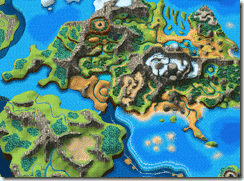
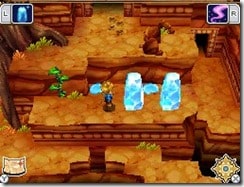
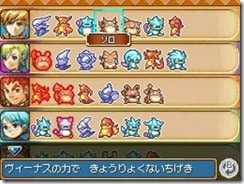
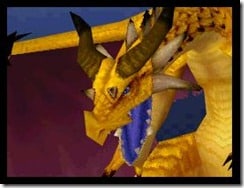
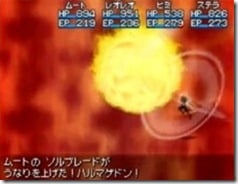
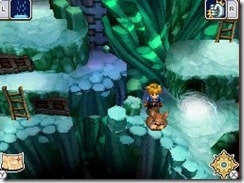
Trackbacks/Pingbacks